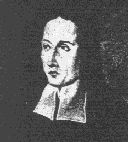

Italian composer. Born in Rieti, he studied in Rome with Francesco Foggia and sang at S. Giovanni dei Fiorentini and SS. Apostoli. At the age of 16 he became maestro di capella at Monterotondo, the held the same post at Rieti Cathedral (1676) and at the Church of S. Marco in the Plazzo Venezia from 1677 until his death. He was also employed by S. Lorenzo in Damaso, S. Giovanni Laterano (1708-1719), and the Capella Giulia at St Peter's from 1719 until his death. In the Accademia di S. Cecilia he was one of the four esaminatori dei maestri.
Pitoni was a prolific composer of sacred music, mostly in the style of Palestrina, he is noteworthy for his brilliant contrapuntal writing and polychoral style; he left 278 masses: 133 for four voices, one for five voices "sinfonie", 104 for eight voices, two for nine voices (pro defunctis), one for 12 voices, eight for 16 voices. 46 masses incomplete for four and eight voices; 14 introiti with kyrie; 207 introiti for a mass; 231 graduals; 15 sequences; 211 offertori; 16 communio; 637 antifone; 255 hymns; 789 psalms; 231 canticles; 37 litanies; 24 lamentations; 24 responsori; 236 motets, a total of some 3500 religious works and some secular works, plus three oratoria (one in Latin). Pitoni was also a theoretician and a historian. His "colossal" style was the musical model imported from Italy by John V of Portugal for the music school attached to the Royal Chapel and represented in works such as António Teixeira's monumental 20-part Te deum written for the Italian church of Lisbon, Nossa Senhora do Loreto.